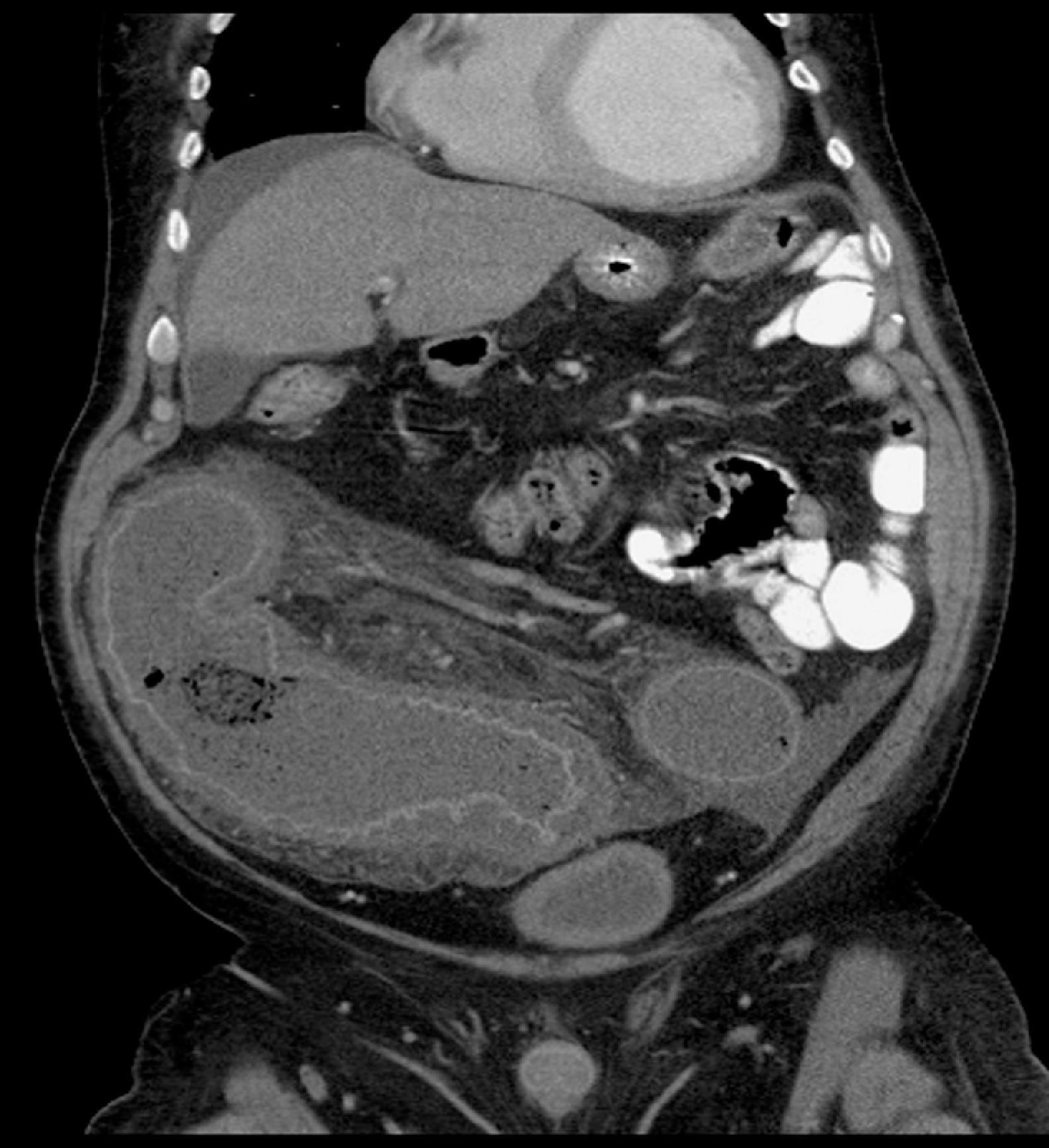Physical Address
304 North Cardinal St.
Dorchester Center, MA 02124
Infectious and inflammatory disorders of the colon are common and do not require imaging in most cases. In some disorders, imaging has a role in establishing the diagnosis, assessing the severity of the process, monitoring the course of the disease, and determining the presence of complications.
Infectious colitis may be caused by bacterial, viral, fungal, and parasitic organisms. In Western countries, bacterial colitis represents the most common form of colonic infection, whereas in underdeveloped countries, parasitic infestation occurs most frequently. Imaging studies are not usually performed for patients with bacterial colitis because the diagnosis is readily established with routine stool cultures.
The diagnosis of bacterial colitis should be suggested by the typical presentation of acute onset of dysenteric symptoms, consisting of fever, crampy abdominal pain and tenderness (with or without vomiting), tenesmus, and small-volume diarrhea (frequently bloody). In most cases, the disease is self-limited. Routine cultures may occasionally yield false-negative results, so specialized cultures are required to isolate specific organisms.
Salmonella is a gram-negative rod that is ingested with contaminated food or water. Colonic involvement may occur during the course of typhoid fever or as an acute dysentery. Typhoid fever is caused by Salmonella typhi or Salmonella paratyphi . Presenting symptoms include marked pyrexia, arthralgias, malaise, headaches, and right lower quadrant pain. When colonic involvement is present, barium enema may reveal narrowing and loss of haustration in the cecum caused by edema and spasm, as well as ileal fold thickening and ulceration. Aphthoid ulcers in the ascending colon have also been reported. , The ileum is invariably involved. Hemorrhage and perforation occur in 1% to 3% of cases.
In most reported cases, barium enemas have revealed a pancolitis with loss of haustration, often associated with superficial or even deep, so-called collar button ulcers. , Thumbprinting has also been reported. Other patients may have extensive small bowel thickening and effacement associated with a pancolitis. Double-contrast studies may reveal punctate mucosal stippling, discrete superficial ulcers, or mucosal granularity. The descending and sigmoid colon are usually involved, with variable proximal extension. Although the rectum generally appears spared radiographically, there may be mild inflammation at endoscopy. A segmental ulcerating colitis in the left colon is rare. Fulminant disease and even toxic megacolon may occur, particularly in older or debilitated persons. Bacteremia is common, and the infection may spread to the gallbladder, bones, lungs, and kidneys.
Infection with Shigella, a gram-negative rod, may be caused by three species— Shigella flexneri, Shigella dysenteriae, and Shigella sonnei . In the United States, S . sonnei is the offending organism in 70% of cases, whereas in Mexico and Asia, S . dysenteriae is most common. Barium enema reveals a predominantly left-sided colitis with deep ulcers, which may have a collar button appearance. Aphthoid ulcers may also be seen.
Campylobacter is the most common cause of bacterial colitis. This organism has been isolated in 7% to 10% of stool cultures obtained from patients with diarrhea. The offending agent is Campylobacter fetus subspecies jejuni . The disease is usually self-limited, lasting less than 7 days, but symptoms may persist as long as 1 month. In some cases, barium enemas reveal a pancolitis with diffuse granularity and loss of haustration simulating ulcerative colitis, whereas in others, barium enemas have revealed aphthous ulcers, resembling those of Crohn’s disease. The left side of the colon is almost always involved. Hemorrhage, perforation, and toxic megacolon have also been reported as complications. The diagnosis requires culture on selective media; serologic studies may also be helpful for confirmation.
Infection by Yersinia enterocolitica, a gram-negative rod, tends to be more common in certain regions, such as Japan, Canada, and Scandinavia. Specific strains may be endemic to each of these locations, and these strains have different clinical and pathologic manifestations.
The terminal ileum is invariably involved on barium enemas; the radiographic findings depend on the stage of the disease. The most common findings include small nodules caused by enlarged lymphoid follicles or discrete punctate, aphthoid, or larger oval ulcers. Folds may also be thickened but, unlike in Crohn’s disease, stenosis is not a feature. Colonic changes are manifested by aphthoid ulcers that are predominantly located in the right side of the colon, but left-sided colonic involvement is occasionally noted. The evolution and resolution of these clinical and radiologic abnormalities may require several months. Perforation is rare, but hepatic abscess and septicemia are well-documented complications. Diagnosis requires special culture media or serologic studies.
Escherichia coli strains are the most common cause of traveler’s diarrhea and are usually self-limited. However, the subtype E. coli O157:H7 has drawn increased attention because it is associated with a high morbidity and mortality. Outbreaks of this infection have been noted in Canada; residents of nursing homes have been particularly susceptible. Patients typically present with watery diarrhea (without fever) that progresses over several days to a hemorrhagic colitis. The most serious complication, the hemolytic-uremic syndrome, results from a toxin associated with this infection. The overall mortality may be as high as 33%. The findings on barium enemas are similar to those of ischemic colitis, with thumbprinting, narrowing, and spasm of the involved bowel. Computed tomography (CT) may reveal low-density thickening of the wall caused by edema ( Fig. 42.1 ). Most reported cases have involved the transverse colon, often associated with extension to the right, left, or both sides of the colon. The morphologic changes are caused predominantly by ischemia, and histologic specimens may resemble pseudomembranous colitis. Treatment is supportive, but this diagnosis is important so that isolation procedures can be instituted.

Become a Clinical Tree membership for Full access and enjoy Unlimited articles
If you are a member. Log in here